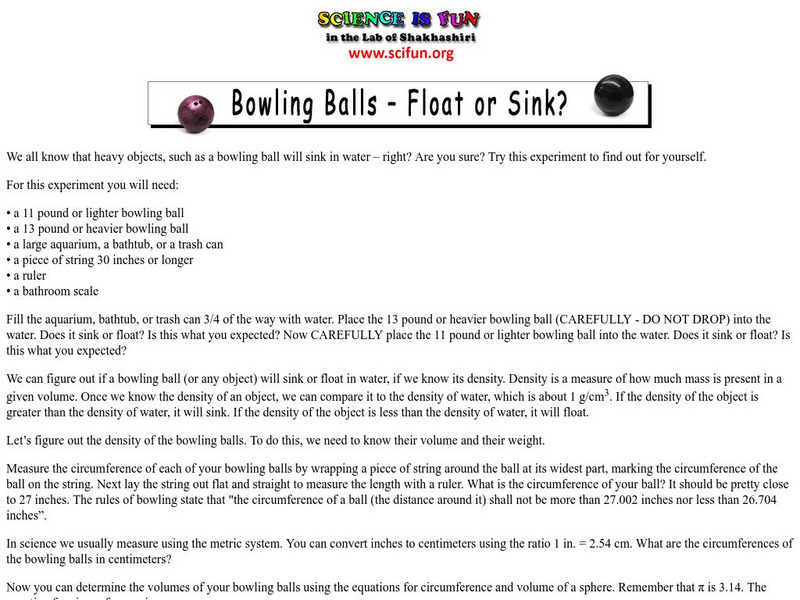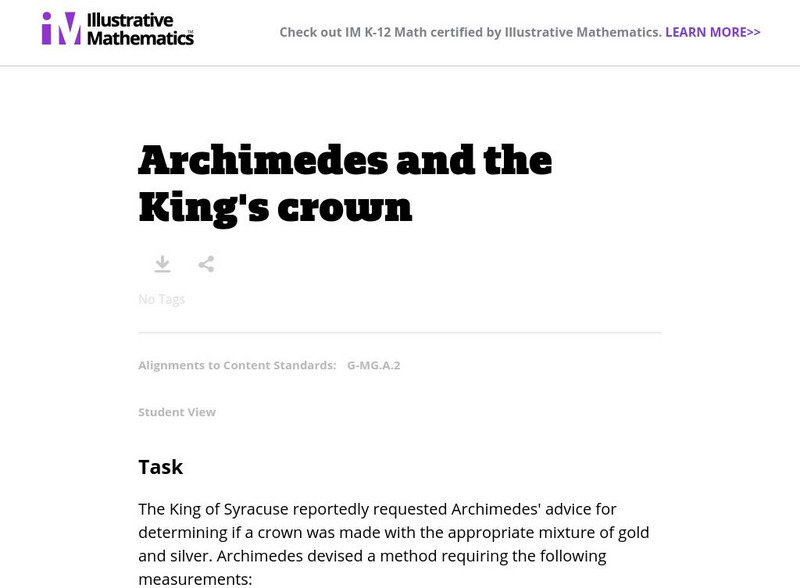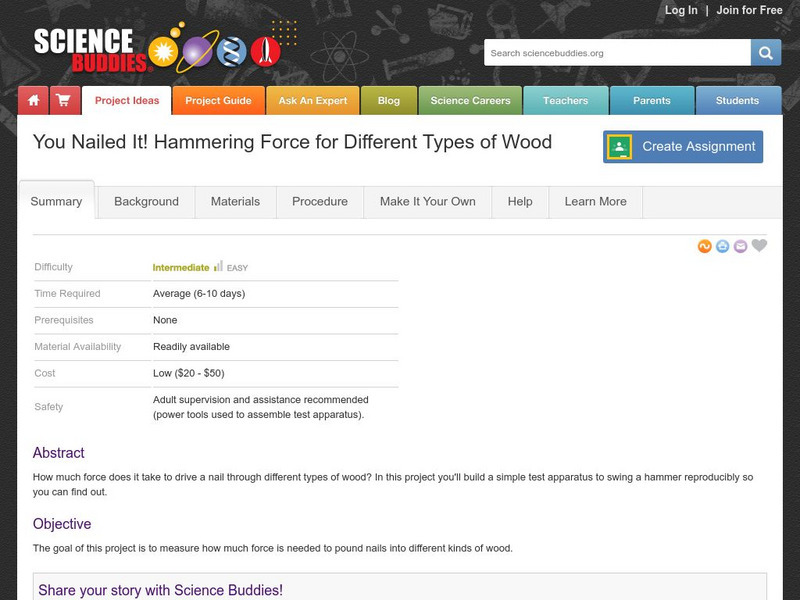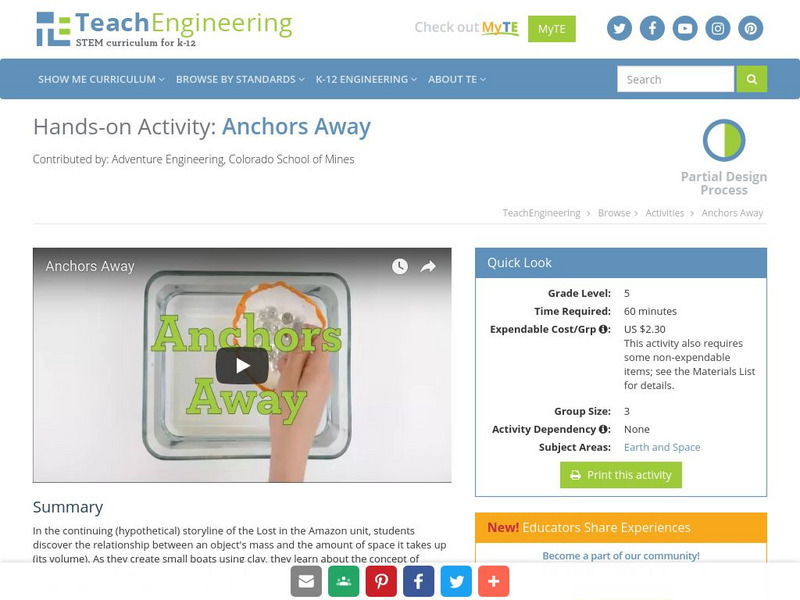PBS
Pbs Teachers: Hot and Cold Water Experiment
Demonstrate the relationship between water temperature and density using two clear plastic soda bottles.
Hunkins Experiments
Hunkin's Experiments: See if a Ring Is Pure Gold
Hunkin's Experiments is a group of simple cartoon illustrations of scientific principles. Some would work well in the classroom, but others have little value beyond entertaining students. All of the projects are easy to do. This one...
TeachEngineering
Teach Engineering: Density Rainbow and the Great Viscosity Race
Students explore the densities and viscosities of fluids as they create a colorful 'rainbow' using household liquids. While letting the fluids in the rainbow settle, students conduct 'The Great Viscosity Race,' another short experiment...
Science Education Resource Center at Carleton College
Serc: Layering Liquids
A lab activity to show students how different densities of liquid layer on top of each other by using four different colored liquids that contain different levels of salinity. This activity can also be used in an ocean unit where...
Science Education Resource Center at Carleton College
Serc: Irregular Shaped Object Lab Test
Students will determine what an unknown substance is by finding mass, volume, displacement, and density of an object. Students will also create a report which will require them to read a graph, interpret data, calculate averages, and...
Science Education Resource Center at Carleton College
Serc: Mn Step: The Great Egg Drop: Relationship Between Gravity, Mass and Density
An interesting experiment in the relationship between gravity, density, and mass. Students must devise a way to drop a milk carton containing two raw eggs off a roof 50 feet high, without breaking the eggs. They then write a scientific...
Science Education Resource Center at Carleton College
Serc: Mn Step: Sink or Float: All Liquids Do Not Have the Same Density
An experiment in density. After a review of floating and sinking of different materials, students test four bottles, all holding four ounces of water, to see if they will float or sink. They each contain a different density of sugar...
Scholastic
Scholastic: Dirtmeister's Science Lab: That Sinking Feeling
Simple experiments dealing with water temperature and density that you can complete in the lab and at home.
Other
Beloit College: K 12 Geology
This is a good source of basic information about density currents in water. It includes simple activities you can do to demonstrate these currents.
Science Education Resource Center at Carleton College
Serc: Mn Step: Sinking and Floating Water
An experiment in density where colored water, both hot and cold, are poured into containers of water at room temperature. Students will observe that the warm water rises and the cold water sinks due to their different densities.
Science Education Resource Center at Carleton College
Serc: Mn Step: Sinking Water: Glaciers, Ocean Currents and Weather Patterns
A instructional activity where students learn how warm water is less dense than cold water, and what this means for global climate change as ice from the polar regions melts. Students will do experiments in buoyancy and water density...
Science is Fun
Science Fun: Layered Liquids
This experiment allows you to dramatically demonstrate the different densities of five different common household liquids.
PBS
Pbs, Secrets of the Ocean Realm: Mountain in the Sea
This experiment allows your students to study the effect of temperature on water motion and also to create their own density driven current.
Science is Fun
Fun Science: Sinking and Floating Soda Cans
Why do some pop cans float in water while others don't? This easy experiment is a great example of the principle of density.
Center of Science and Industry
Cosi Columbus: Buoyant Bubble [Pdf]
Learn about density in this hands-on science experiment. Includes full list of materials, procedures, and scientific explanation of what makes an object float or sink. [PDF]
Science is Fun
Science Is Fun: Bowling Balls Float or Sink?
In this experiment, you test whether two different bowling balls will float or sink, then determine the density of each of the balls to see if they are less than that of water.
Illustrative Mathematics
Illustrative Mathematics: G Mg Archimedes and the King's Crown
The King of Syracuse reportedly requested Archimedes' advice for determining if a crown was made with the appropriate mixture of gold and silver. The problem asks young scholars to find the amount of water displaced in Archimedes'...
Other
Science Alive: Repeating Experiments
In this lab activity, students are required to write a procedure to be followed in a simple lab process and record the results they get from following that procedure. They then exchange procedures with another lab group, which will have...
Science Fun for Everyone
Science Fun: Rainbow in a Glass
Use skittles to form a rainbow with this hands-on experiment. Links to video of the experiment.
Science Buddies
Science Buddies: You Nailed It! Hammering Force for Different Types of Wood
This Science Buddies project explains how to build a mechanism that will reproducibly swing a hammer so you can determine the amount of force needed to hammer a nail through various densities of wood. The Science Buddies project ideas...
SEDL
Oceans [Pdf]
This large PDF file integrates math, science, and language into several lessons about characteristics of the oceans. Topics include ocean currents, tides, density, marine life, and pollution.
Science Buddies
Science Buddies: Up, Up, and Away in Your Own Hot Air Balloon!
In this science fair project, students will make hot-air balloons using a toaster and dry-cleaning bags, and see how the size of the balloon affects its flight. The Science Buddies project ideas are set up consistently beginning with an...
TeachEngineering
Teach Engineering: Anchors Away
In this activity, the students will discover the relationship between an object's mass and the amount of space it takes up (its volume). The students will learn about the concept of displacement and how an object can float if it...
Other
Steve Spangler Science: Denver's Brown Cloud
Learn how fluids move through our atmosphere and water. This experiment explains atmospheric convection currents (thunderstorms), the Gulf Stream, and temperature inversion. A video is included.
Other popular searches
- Liquid Density Experiments
- Density Experiments Physics
- Solid Density Experiments
- Water Density Experiments
- Glycerin Density Experiments
- Metals Density Experiments
- Wood Density Experiments
- Matter Density Experiments
- Density Experiments Bread
- Gycerin Density Experiments
- Density Experiments Sugar
- Gas Density Experiments







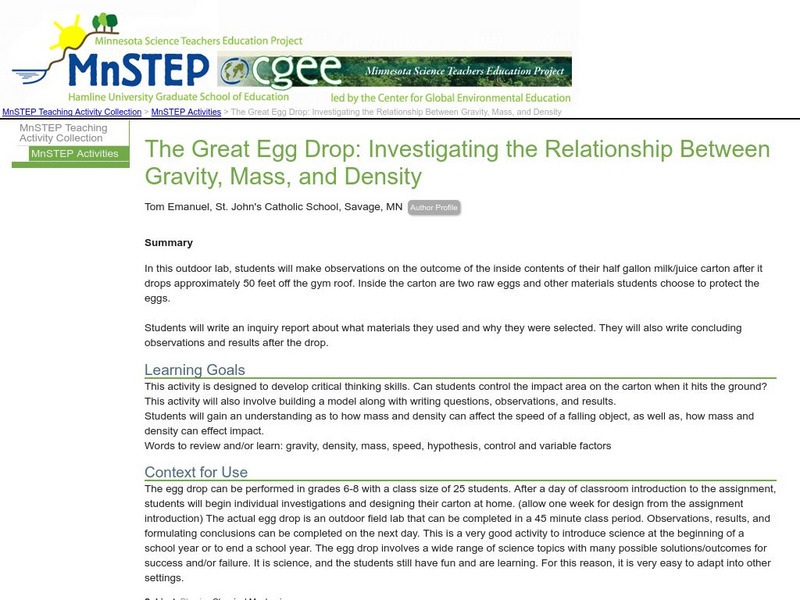
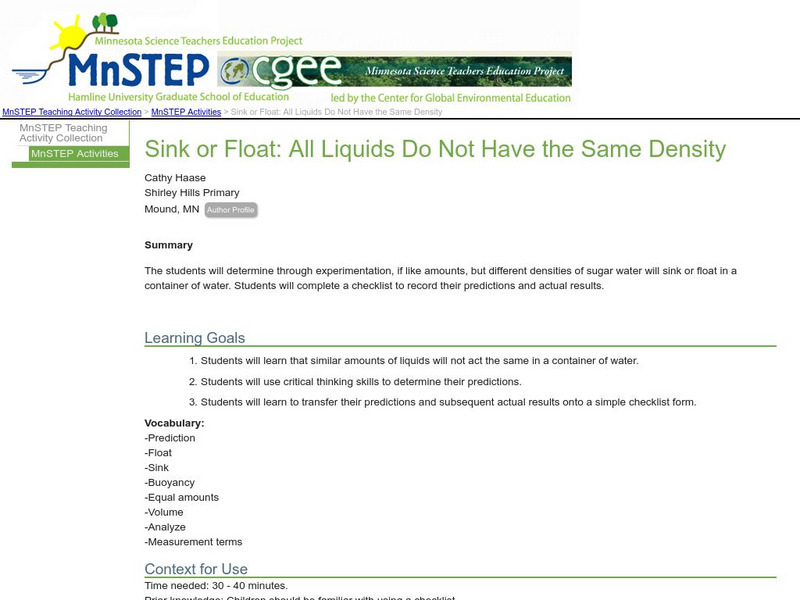

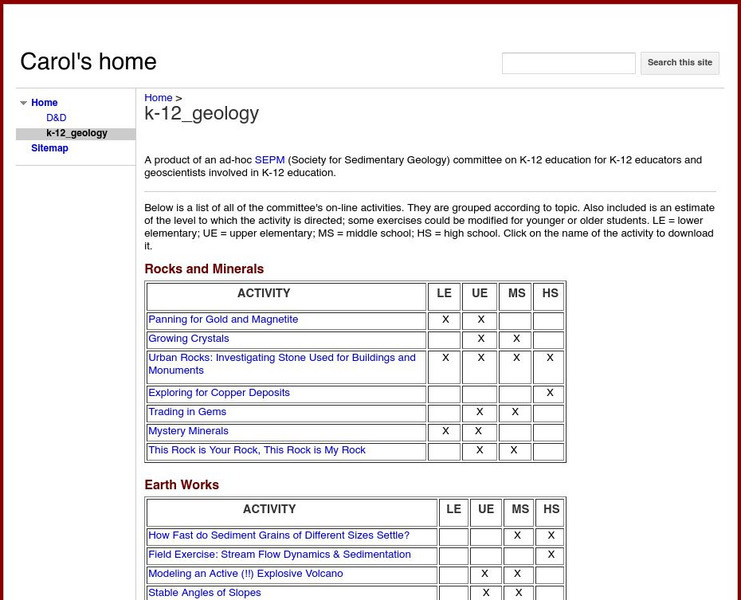

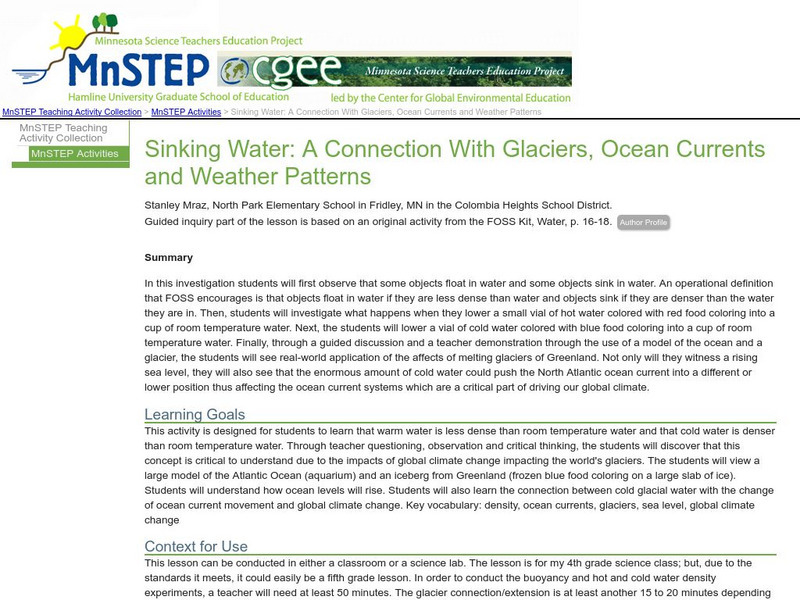

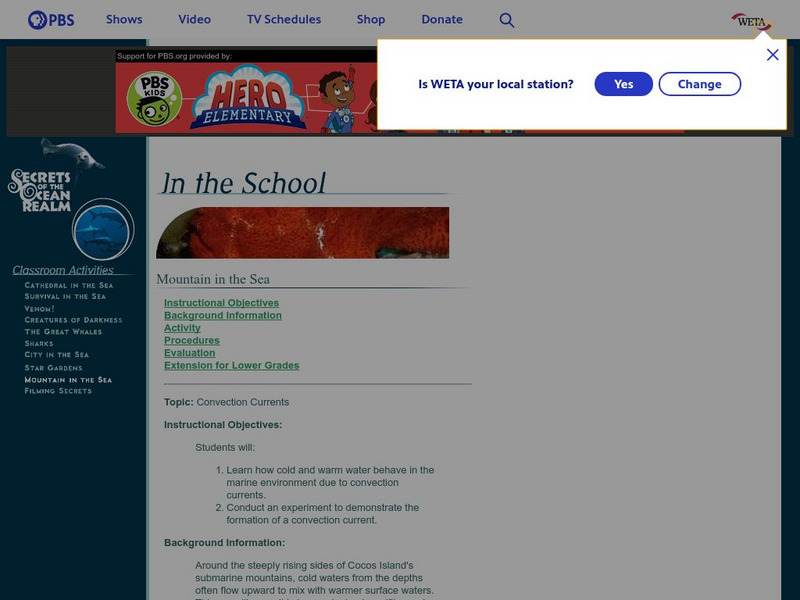
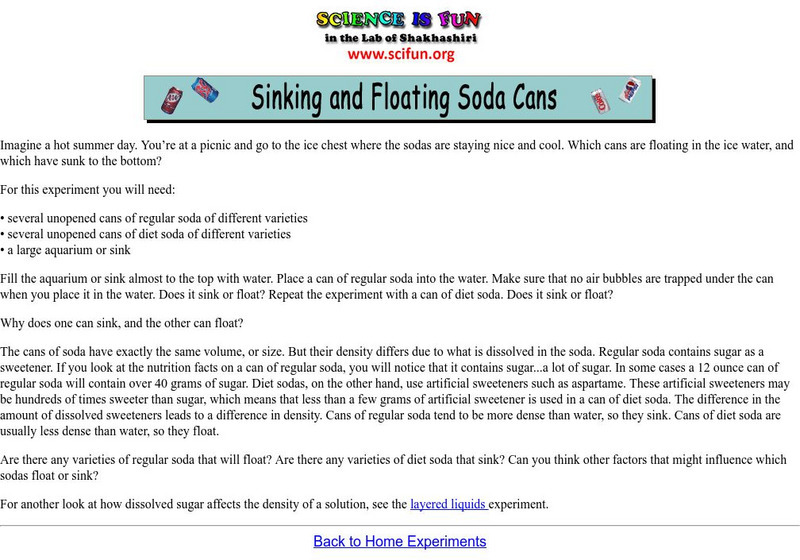
![Cosi Columbus: Buoyant Bubble [Pdf] Activity Cosi Columbus: Buoyant Bubble [Pdf] Activity](https://d15y2dacu3jp90.cloudfront.net/images/attachment_defaults/resource/large/FPO-knovation.png)
